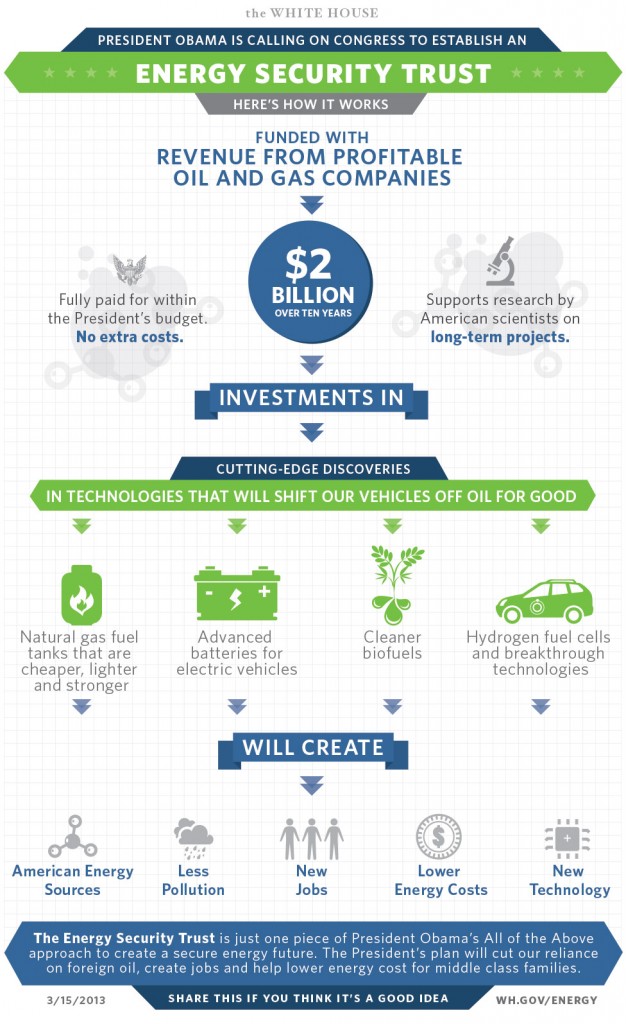Shot in the Arm! White House Proposes Creation of Energy Security Trust to Fund Clean Energy Research
America’s energy security gets a boost from the White House. President Obama proposed the creation of Energy Security Trust during his visit to the Argonne National Research Lab to talk about American energy security. The Energy Security Trust, a$2 Billion investment over 10 years, uses revenue generated by oil and gas development on federal lands to support new research and technology that will shift our cars and trucks off of oil for good. Below is an infographic that outlines how this works:
Here is an excerpt from the White House Blog:
So how does it work? The Energy Security Trust will invest in research that will make future technologies cheaper and better – it will fund the advances that will allow us to run cars and trucks on electricity or homegrown fuels, and on the technology that will enable us to drive from coast-to-coast without a drop of oil.
Over 10 years, the Energy Security Trust will provide $2 billion for critical, cutting-edge research focused on developing cost-effective transportation alternatives.The funding will be provided by revenues from federal oil and gas development, and will not add any additional costs to the federal budget. The investments will support research into a range of technologies – things like advanced vehicles that run on electricity, homegrown biofuels, and domestically produced natural gas. It will also help fund a small number of real-world experiments that try different transportation techniques in cities and towns around the country using advanced vehicles at scale.
If it is worth something, President Obama has indicated his desire to use the executive powers to curb climate change impacts should Congress fail to act. According to Bloomberg, the president is also thinking of using a Nixon-era law, the National Environmental Policy Act (NEPA), signed into law by President Richard Nixon in 1970, to instruct all federal agencies to consider the impact of climate change when approving “major projects, from pipelines to highways.” Of course, this can have some serious implications for large scale projects and some constituencies in the business sector are already freaking out over this mandate.
While we are busy discussing this issue, I’d like to share with you an address by President Obama from March 2011 in which he outlined his goals for reducing American energy dependence, heavily emphasizing new technology and alternative sources in addition to “safe and responsible” offshore drilling. A lot of what he outline in his blue print for change is already starting to take effect and I can only say that we are poised for a big change in the way we power our vehicles and industries. Fossil fuels are definitely beginning to see a slow demise (but it will be decades before they are completely phased out in the transportation sector).










